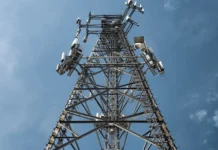It will take dogged determination on the part of the new government to make the ambitious National Optical Fibre Network project, connecting 250,000 gram panchayats, the conduit for digital inclusion in India.
Healthcare, education and a plethora of government-to-citizen services can transform millions of lives that are hitherto underserved with a low rural teledensity of 40 per cent. The telecom infrastructure sector not only provides last-mile voice and data connectivity but also offers the requisite brick-and-mortar infrastructure support for distribution of services.
In 2012, recognising the importance of the telecom tower industry, the last government had brought it under the harmonised list of infrastructure sub-sectors. The Department of Telecom has already sought clearance for confessional loans with longer tenures of 12-15 years. The telecom sector is reeling under massive debt of over Rs 2.5 lakh crore, and provision of viability gap funding (VGF) is key . This facility will reduce the capital cost of the projects by credit enhancement, and make it viable and attractive for private investment through supplementary grant funding. In addition, VGF will be necessary to meet the green energy targets mandated by the government.
We are hopeful that the new government will look into the issues of the telecom tower sector and review our request for inclusion of telecom tower infrastructure service in the definition of Infrastructure facility in Section 80 IA of the Income tax Act. Also, the government should allow higher limit of funds through ECBs in order to retire high-cost domestic loans.
While the industry is trying to gradually reduce its carbon footprint and consumes less than two per cent of the country’s total diesel consumption, stable grid power supply will be the biggest boost to the sector in further lowering emissions and costs.
We must seize the opportunity to transform the country’s landscape driven by the second wave of the telecom revolution.



















